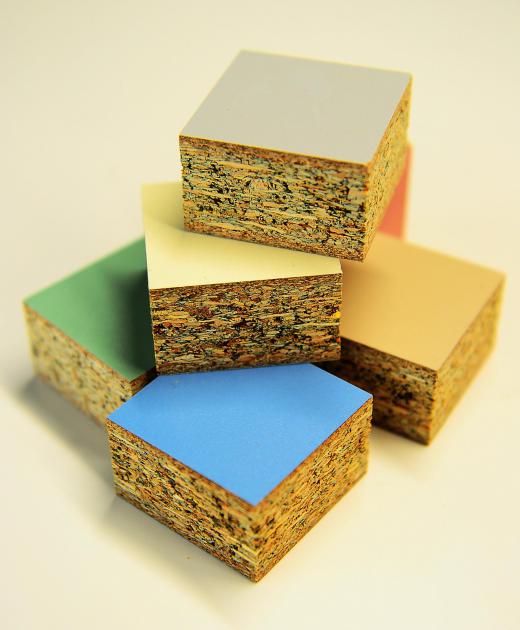Melamine chipboard is an engineered wood product which contains melamine, a chemical compound which has a number of uses. Melamine can be found inside almost all chipboard products, and it is also used as a facing material to make veneers and laminates. Health concerns about melamine have made some people nervous about products which contain this chemical, but in the case of melamine chipboard, it is generally viewed as safe because it is embedded inside the material, limiting exposure.
Chipboard, also known as particleboard, is made from a variety of scrap wood materials including sawdust and paper. These materials are glued together with melamine resin, a mixture of melamine and formaldehyde which helps the chipboard hold its shape. The resulting product is very dense and extremely strong, and can in fact be superior to actual wood in some applications such as flooring, where high strength is desired. It is also used in products like furniture, to increase sturdiness and lower costs.

Melamine is also used as a facing material. Melamine faced chipboard includes a layer of laminate over the chipboard which is designed to improve appearance or performance. Since melamine chipboard is often hidden from view, facing is not always vitally necessary, but it may be used in settings in which it could be visible or in which facing confers properties like water resistance which may be desirable for some types of construction.
Melamine confers some fire retardant properties on the materials it is used on, which makes it useful in construction materials. It also adds strength, and can help resist bacterial or fungal colonization. All of these properties make melamine a useful building material, even if it can also be toxic in some settings. The primarily concern with melamine chipboard is that the board could be damaged, causing people to inhale or consume melamine particles which could cause health problems. The formaldehyde used in the resin can also cause health problems as a result of offgassing.
Materials safety is a major concern in many nations. Many countries have laws dictating which materials can be used in products like melamine chipboard, where such products can be used, and how such products can be used. Manufactured wood products are periodically tested to confirm that their toxic components are within tolerances and should not pose a threat to human health. Studies continue into the dangers posed by products containing melamine, however, and anyone working with these products or who may be exposed to dust containing melamine should take precautions to avoid inhaling or ingesting the chemical or spreading it to others.
Ever since she began contributing to the site several years ago, Mary has embraced the exciting challenge of being a About Mechanics researcher and writer. Mary has a liberal arts degree from Goddard College and spends her free time reading, cooking, and exploring the great outdoors.

